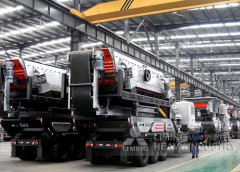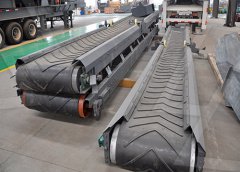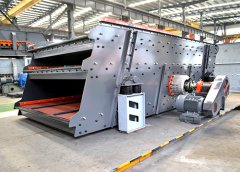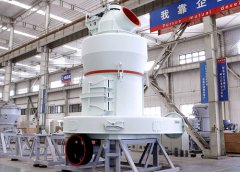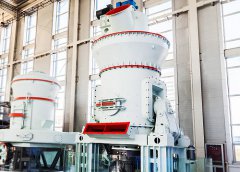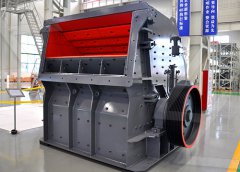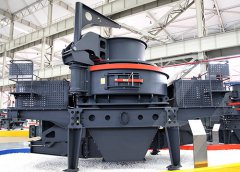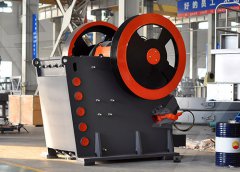
Metal extraction and the reactivity series The reactivity
Metal extraction and the reactivity series Very reactive metals, such as aluminium, form stable oxides and other compounds. Electrolysis close electrolysis The Less reactive metals, such as iron, form less stable oxides and other compounds. Reduction with In chemistry, a reactivity series (or activity series) is an empirical, calculated, and structurally analytical progression of a series of metals, arranged by their "reactivity" from highest to lowest. It is used to summarize information about the reactions of metals with acids and water, single displacement reactions and the extraction of metals from their ores. Reactivity series
احصل على السعر
Reactions of metals AQA The reactivity series of metals
GCSE AQA Trilogy Reactions of metals AQA The reactivity series of metals The reactivity series shows metals in order of reactivity. The reactivity of a metal is The reactivity series can be used to make predictions about how fast a metal reacts or whether it will displace another metal from a compound . The table summarises some The reactivity series of metals How are metals with
احصل على السعر
Extracting metals How are metals with different
Metals can be arranged in order of reactivity by observing their reactions with water, acid and displacement reactions with other metal compounds. This determines how it is Extraction of metals. The reactivity series ranks metals by how readily they react. More reactive metals displace less reactive metals from their compounds and react with Metals and reactivity series (CCEA) Extraction of metals
احصل على السعر
The reactivity of metals Extraction of metals from their
The reactivity series lists metals from the most reactive to the least reactive. A metal can displace a less reactive metal from its compounds. This is useful for extracting metals The position of a metal in the reactivity series is related to the available methods of extraction of the metal. These resources cover four main methods: physical extraction, Reactivity Series, Redox Reactions and Extraction of Metals
احصل على السعر
Reactivity series of metals RSC Education
The video offers three experiments that investigate the relative reactivity of metals. The first explores the reactions of the alkali metals in water and is a teacher demonstration. 2. Extracting Metals in the Middle of the Reactivity Series . The metals in the middle of the activity series such as iron, zinc, lead, copper, etc., are moderately reactive. These are usually present as sulfides or carbonates in nature. It is easier to do extraction of metals or obtain metal from its oxide, as compared to its sulfides andExtraction of Metals: Methods, Processes Involved, Minerals,
احصل على السعر
Extraction of Metals CIE IGCSE Chemistry Revision Notes 2023
The reactivity series is a list of common metals in order from most to least reactive. The general methods of extraction of metals involve electrolysis or reduction with carbon. Those metals placed higher up on the series (above carbon) have to be extracted using electrolysis. Metals lower down on the series can be extracted by heating with carbon.Difference between electrolytic reduction and electrolytic refining. The arrangement of metals in a vertical column in the order of decreasing reactivities is called reactivity series of metals. The most Reactivity series of metals 5m512144
احصل على السعر
Extraction of Highly Reactive Metals GeeksforGeeks
Extraction of Highly Reactive Metals. A category of metal elements known as reactive metals can react with acids, water, mineral acids, and severe oxidising acids. The activity or reactivity series, which ranks the most reactive metals from highest to lowest, can be used to identify this group. The reactivity of metals increases and losesIn chemistry, a reactivity series (or activity series) is an empirical, calculated, and structurally analytical progression of a series of metals, arranged by their "reactivity" from highest to lowest. It is used to summarize information about the reactions of metals with acids and water, single displacement reactions and the extraction of metals from their Reactivity series
احصل على السعر
Reactivity Series Reactivity of Metals Chart, Features, Uses
Important Uses of Reactivity Series. In displacement reaction Displacement reactions are those reactions in which more reactive metal displaces less reactive metal from its salt. So, by reactivity series, you can tell which metal will displace another metal. The reaction between metals and water Metals from potassium to Learn about the processes that are related to extraction of metals and learn about the reactivity series with BBC Bitesize GCSE Chemistry (WJEC).The reactivity series of metals Evidence for the reactivity series
احصل على السعر
WJEC England GCSE Chemistry Topic 6: Reactivity series and extractions
The reactivity series When metals react with other substances, metal atoms Non-metals hydrogen and carbon are often included in the reactivity series Extraction by heating with carbon (including iron) any metals less reactive thanThe electrochemical series; Extraction of metals; The method used to extract a given metal from its ore depends upon the reactivity of the metal and how stable the ore is.Extraction of metals Properties of metals National 4 BBC
احصل على السعر
Extracting metals How are metals with different reactivities
Learn about and revise the reactivity series and extraction with this BBC Bitesize GCSE Combined Science (OCR 21C) study guide.Metals in the middle of the activity series are moderately reactive, i.e.; they are neither very reactive nor less reactive. This may include manganese, iron, zinc, lead etc. In nature, they are typically found as metal sulphides or metal carbonates. It is easier to extract a metal from its oxides as compared to its sulphides and carbonates.Metal Extraction in the Middle of the Reactivity Series
احصل على السعر
Extraction of Moderately and Less Reactive Metals
The middle of the reactivity series metals is extracted by reducing their oxides with carbon, aluminium, sodium, or calcium. Some moderately reactive metals are found as oxides in nature, while others are found as carbonates or sulphide ores. Metals are now easier to be obtained by reduction from their oxides than from carbonates and 4.8.2.1 Metal extraction by reduction of oxides. Explain, using the position of carbon in the reactivity series, the principles of industrial processes used to extract metals, including extraction of a non-ferrous metal. AQA Where is carbon in the reactivity series? RSC Education
احصل على السعر
Reactivity of Metals AQA GCSE Chemistry: Combined Science
Hydrogen is placed in the reactivity series because metals only react with acid if the metal is more reactive than hydrogen. Carbon is placed in the reactivity series because it allows us to see whether a metal oxide can be reduced by carbon or not for metal extraction. Metal Extraction. Many metals exist as ores in the Earth’s crust.The reactivity series of metals is a list of metals arranged in order of decreasing reactivity. The most reactive metals are at the top of the series, and the least reactive metals are at the bottom. The reactivity of a metal is determined by its tendency to lose electrons and form positive ions.Metals and Extraction of metals and Metal reactivity series
احصل على السعر
For extraction purpose, metals in the reactivity series are
Reactivity series depicts the reactivities of metals in decreasing order. It is very helpful in the extraction of metals. The extraction of metals depends on their reactivities. For extraction purpose, metals in the reactivity series are ordered under three sections: 1. Highly reactive metals 2. Moderately reactive metals 3. Low reactive metalsThe reactivity series ranks metals by how readily they react. More reactive metals displace less reactive metals from their compounds and react with water. This table summarises the reactions ofMetals and reactivity series (CCEA) The reactivity series of metals
احصل على السعر
Know the Steps of Extraction of Ores Unacademy
Smelting : Smelting means slag formation or Carbon Reduction. Cu2O is self-reduced by Cu2S and forms Cu, and it is known as blister copper due to the removal of SO2 .Highly reactive metals are reduced by electrolysis by their molten salts as we learn in metal reactivity series. Aluminium is a highly reactive metal so it is reduced by electrolysis.EXTRACTION OF METALS:-. Some metals are found in the earth’s crust in the free state. Some are found in the form of their compounds. The metals at the bottom of the activity series are the least reactive. They are often found in a free state. For example, gold, silver, platinum and copper are found in the free state.Extraction of Metals Shaalaa
احصل على السعر
Extracting Metals Low in the Activity Series Vedantu
Methods of Extraction. The metals positioned at the top of the series, such as sodium, potassium, and lithium, are highly reactive and can easily be oxidised. They can displace the metals placed below them lower in the series. The lower metals in the series are less reactive. In the series, moderately reactive metals like zinc, iron, tin, and
احصل على السعر
